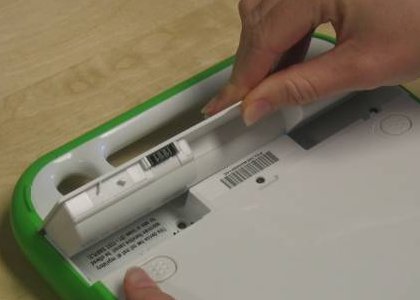Battery Charging: Difference between revisions
| Line 7: | Line 7: | ||
OLPC is using two battery chemistries: NiMH, and LiFePo batteries. The LiFePo batteries allow charging at higher temperatures. The NiMH batteries cannot be charged above about 45 degrees C. |
OLPC is using two battery chemistries: NiMH, and LiFePo batteries. The LiFePo batteries allow charging at higher temperatures. The NiMH batteries cannot be charged above about 45 degrees C. |
||
The LiFe batteries have labels "Battery sample" on them, and are lighter than NiMH, as well as allowing for larger capacity (we do not have to reserve capacity to avoid overcharging which would reduce NiMH batteries life). |
|||
==Recovery of Dead Batteries== |
==Recovery of Dead Batteries== |
||
Revision as of 16:28, 30 March 2007
Battery Charging
Types of Batteries
OLPC is using two battery chemistries: NiMH, and LiFePo batteries. The LiFePo batteries allow charging at higher temperatures. The NiMH batteries cannot be charged above about 45 degrees C.
The LiFe batteries have labels "Battery sample" on them, and are lighter than NiMH, as well as allowing for larger capacity (we do not have to reserve capacity to avoid overcharging which would reduce NiMH batteries life).
Recovery of Dead Batteries
BTest-1 Systems
BTest-2 Systems
Long Term Storage
If you plan to store a system for many weeks or months, your best strategy is to fully charge the battery and remove the battery from the laptop. Batteries naturally lose charge with time (how fast depends on the battery and its chemistry), and the embedded controller in the laptop, while sipping tiny amounts of power in its low power state, will drain the battery faster. Even though BTest-2 systems should now always be able to recover batteries that are fully discharged (except those noted above), it is a trickle charge process and time consuming.
As you can see above, letting a battery drain all the way will cause problems when recharging, how severe depends on the circumstances.
This strategy to remove batteries is true for all battery powered equipment, from flashlights up. Batteries sometimes leak. And some chemistries of Lithium batteries (not LiFePo) can get into a metastable state where they cannot be recharged.
